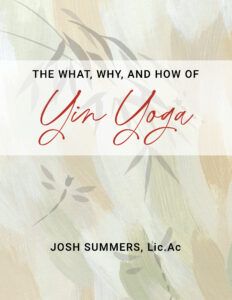Again and again, whether in casual conversation or during workshops, a well-intentioned student or friend will suggest that the aim of meditation is to “get into a ‘neutral’ state of equanimity” where the ups and downs of life no longer agitate one’s mind. In Buddhism, reflections on what are called The Eight Worldly Winds might contribute to this view. The Eight Worldly Winds are: praise and blame, success and failure, pleasure and pain, and fame and disrepute. And it’s easy to imagine why someone might want to crawl into a state of transcendence, to a safe remove from their exhausting oscillation.
In my mind, these Winds are not so much to be transcended as to be understood. They seem to symbolize the basic energies around which worldly affairs are organized, where we compulsively seek the former and avoid the latter. In an unawakened state, we remain hitched to their currents, spinning around and around the wheel of becoming, ever and ever.
One could make a case that with awakening comes a radical impassivity by which the mind is truly cooled and no longer moved by these Winds. But I think there is a danger in evaluating one’s practice as going well or not well based on state experiences of equanimity. Along the path of practice, there seem to be stages of development where the mind gets into very strong phases of equanimity and also stages where that equanimity feels totally lost and ripped to shreds. (more on these stages later)
Ajahn Brahm tells a hilarious story of an earnest monk who was a bit confused about his attainments. This monk had spent some time in solitary practice on an island hermitage not far from his base monastery. Convinced that he had fulfilled the spiritual life, he wanted to notify his abbot of his achievements. The monk asked his attendant to bring him some art supplies so that he could compose a beautiful calligraphy that would convey his enlightenment to the old abbot. The young monk wrote the following poem and asked his attendant to deliver it to the abbot:
The conscientious young monk
meditating three years alone
can no longer be moved
by the four worldly winds.
The young monk was quite confident that the abbot would be extremely impressed. He began to imagine how the abbot might appoint him as his successor, or, at the very least, prominently frame and display the young monk’s poetic expression of enlightenment. But when the attendant returned from the abbot, an expression of alarm and rage quickly flashed across the young monk’s hitherto serene face.
When he looked at what the attendant handed back to him, he saw that the abbot had written the word FART next to each line of the young monk’s song of enlightenment. It was written in red ink no less. Outraged, the young monk demanded to be taken to the abbot immediately. Obviously, the old abbot had lost the plot and the integrity of the monastery was at stake.,
But when the young monk arrived before the abbot, the old man slowly picked up the young monk’s poem and read it aloud:
The conscientious young monk
meditating three years alone
can no longer be moved
by the four worldly winds.
The wise old abbot then finished the young monk off: “Hmmm! So young monk, you are no longer moved by the four worldly winds. Yet four little farts have blown you right across the lake!”
I’m not sure why they refer to the four worldly winds in this story and not eight. Perhaps the young monk didn’t have more poetry in him to cover all eight. Nevertheless, be wary of practicing like this fellow, and if you do, be ready for a dose of humiliation from your teacher, or more likely, from life, itself.
This story and others like it can be found in Ajahn Brahm’s book, Who Ordered This Truckload of Dung.
Originally published on July 26, 2012

